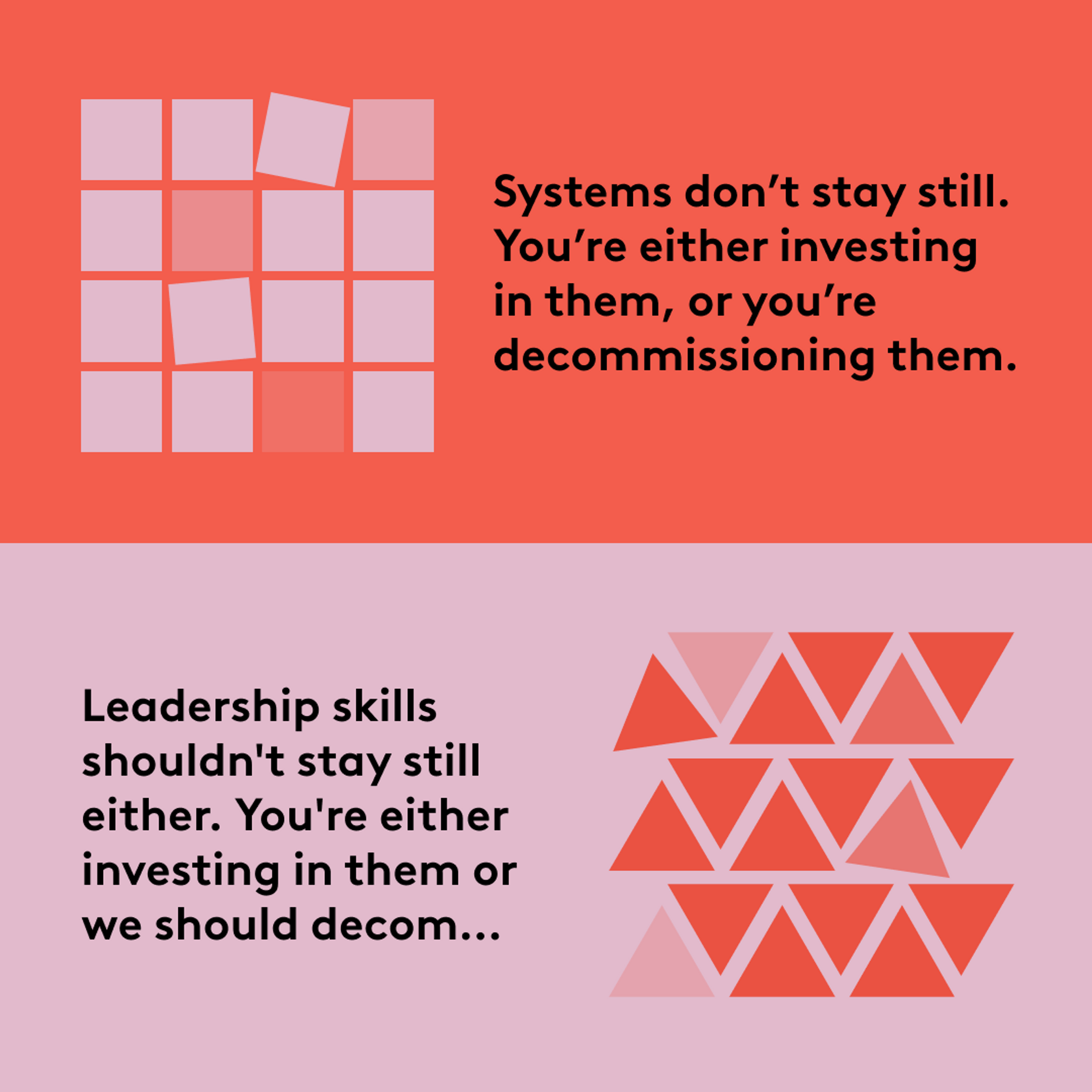
Executive development
We train, coach and advise executives on how to lead organisations through digital transformation.
In technology, there’s a hard truth: systems don’t stay still.
User needs, technology and security threats change constantly, and so the systems in an organisation which govern or respond to them must change too. You're either investing in those systems - for better or worse - or you're decommissioning them.

When it comes to technology, the failure to decommission and reinvest in up-to-date systems can lead to technical debt - meaning the natural degradation of technical capabilities. Over time these legacy capabilities become more brittle and expensive to maintain, as well as increasingly tangled and complex. They slow the pace at which new systems can be deployed, and become a hidden liability on the balance sheet.
Technical debt is well recognised. But the same logic of ever-shifting organisational needs - and therefore the debt accrued by standing still - applies to leadership too. As a leader, your skills, models and culture operate as a system of their own, determining how well your organisation is able to adapt and respond to change.
And if you’re not actively investing in those leadership skills and behaviours, you should be decommissioning them.
Leadership debt is no less toxic for organisations than technical debt. It is the accumulation of outdated mindsets, behaviours and decision-making frameworks that prevent an organisation from adapting at speed. Over time these can:
Create a brittle culture which is resistant to new ideas and risk-averse.
Prevent innovation: valuable staff who practice new ways of working become blocked or leave.
Become a drag on speed and morale: Slow decision-making frustrates empowered teams and slows delivery.
Become a hidden, growing liability: The organisation gets slower, loses talent and fails to meet user needs.
Like technical debt, leadership debt often happens unconsciously, through continuing to use systems or behaviours that are slowly but surely becoming unfit for purpose.
Avoiding leadership debt requires a sustained, conscious effort to identify and decommission what is no longer working in your leadership approach, and actively invest in approaches that will enable your organisation to become adaptive.
This will be specific to your context, but the following guide serves as a starting point for leaders:
Invest in: Decisions made by empowered teams, based on user research and data: As close as possible to detailed, current knowledge.
Invest in: A clear strategic intent, executed via incremental test and learn cycles.
Invest in: Leadership as a service to teams - providing context, removing blockers and creating psychological safety.
Invest in: Rewarding the achievement of outcomes (the "why").
Invest in: Storytelling. Creating compelling stories to change and inspire.
There is no middle ground
Your leadership approach is either an asset you are actively improving, or it is a legacy system accruing debt every single day. It cannot stand still.
This is not about being a "bad leader". It's about recognising that the context has changed, and the old playbook no longer works. The world moves; you have to move with it.
Moving from a command model to a coaching model, from directing to enabling, is hard work. It requires a conscious, sustained investment.
If you’re a leader ready to stop managing a legacy system and start building a resilient, adaptive organisation, we might be able to help.

Principal Consultant